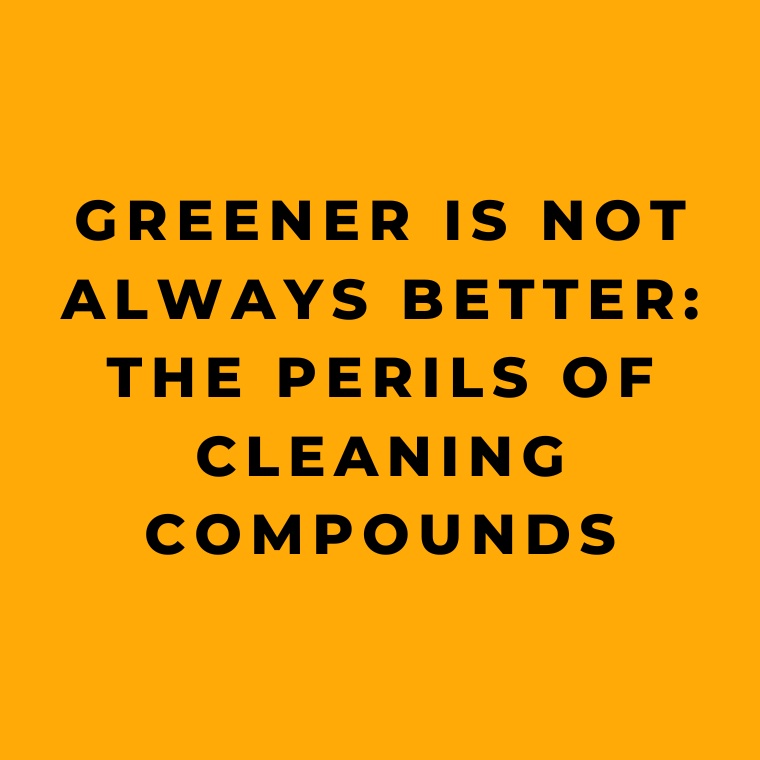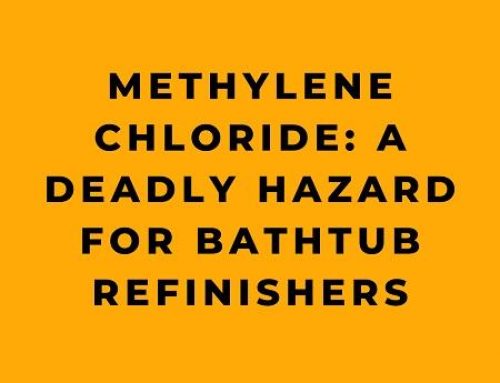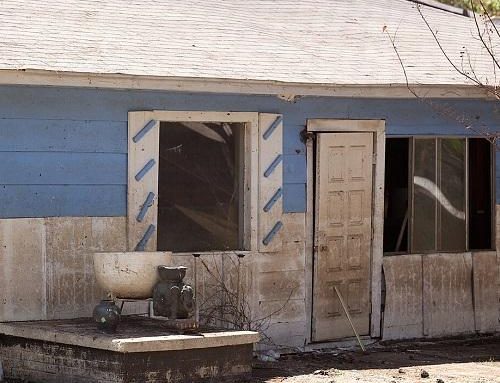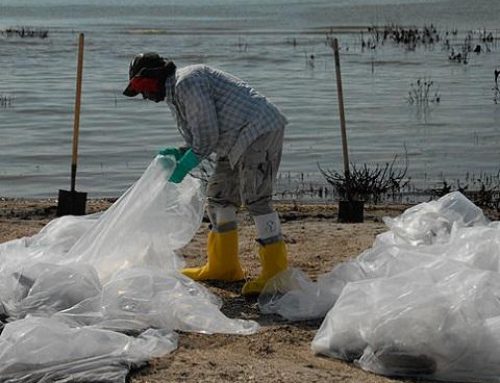Today we’re diving into the world of cleaning chemicals and the hidden dangers they can pose to workers. In our modern world, keeping workplaces like schools, hospitals, and factories spick-and-span is critical, but it’s important to remember that not all cleaning chemicals are created equal. Some of them can cause health problems ranging from skin rashes to asthma.
In this article, we’ll explore the trend of green cleaning products, the importance of understanding the difference between cleaners, sanitizers, and disinfectants, and how to use Safety Data Sheets (SDSs) to choose the safest options. We’ll also cover some essential safe work practices when using cleaning chemicals and discuss cutting-edge cleaning equipment that minimizes the use of chemicals for a healthier work environment.
So, buckle up and get ready to learn how to keep your workplace clean and safe at the same time! Let’s get started!
Across various establishments like educational institutions, medical centers, hotels, eateries, and production facilities, cleaning agents play a crucial role in maintaining the spick-and-span conditions of their premises. Among those entrusted with handling these substances are the diligent building maintenance crews, janitors, and housekeeping staff. Unfortunately, certain cleaning chemicals come with their share of hazards, leading to issues varying from skin irritations and burns to respiratory distress, such as coughing and asthma. Consequently, numerous employers are turning to eco-friendly cleaning solutions, as they are believed to pose fewer risks to both the workforce and the environment. This handy article is designed to offer guidance to employers on adopting practices that prioritize worker safety when dealing with cleaning agents, including those of the green variety.
Potential Health Complications Stemming from Cleaning Chemicals
A variety of factors determine whether a cleaning chemical might lead to health issues. It’s essential to take the following aspects into account:
- The chemical composition of the cleaning solution;
- The manner in which the product is utilized or stored;
- The ventilation provided in the area of use;
- The occurrence of splashes and spills;
- The possibility of skin contact with the cleaning agent; and
- The release of mists, vapors, and/or gases.
Certain cleaning chemicals might have ingredients that irritate the skin or cause rashes. Products containing corrosive substances can lead to severe burns if they come into contact with the skin or eyes. Mists, vapors, and/or gases released by these chemicals may irritate the eyes, nose, throat, and lungs, causing symptoms such as burning eyes, a sore throat, coughing, difficulty breathing, and wheezing.
Some cleaning agents may induce asthma or provoke asthma attacks. Hazardous chemicals in certain products can enter the body through skin contact or by inhaling gases into the lungs. Mixing cleaning agents containing bleach and ammonia can result in serious lung damage or even prove fatal.
Selecting Safer Cleaning Solutions: Cleaners, Sanitizers, or Disinfectants
The Environmental Protection Agency (EPA) classifies cleaners, sanitizers, and disinfectants as follows:
- Cleaners: Effective in removing dirt through wiping, scrubbing, or mopping.
- Sanitizers: Contain chemicals that reduce but don’t necessarily eradicate microorganisms such as bacteria, viruses, and molds on surfaces. Public health codes may mandate the use of sanitizers in specific areas like restrooms and food preparation zones.
- Disinfectants: Comprise chemicals that destroy or inactivate infection-causing microorganisms. Disinfectants are crucial for infection control in hospitals and other healthcare facilities.
It’s important to understand that cleaners, sanitizers, and disinfectants serve distinct purposes. Choose the least hazardous cleaning agent that will effectively perform the task at hand. Prior to purchasing cleaning products, determine if sanitizing or disinfecting is necessary. If not, opt for a cleaner. Generally, disinfectants and sanitizers are more hazardous than cleaners.
When sanitizing or disinfecting is required, ensure that the product is effective against the targeted microorganisms. The EPA regulates sanitizers and disinfectants, which are categorized as “antimicrobial pesticides.” For more information, refer to the EPA’s webpage “What Are Antimicrobial Pesticides?” (www.epa.gov/pesticide-registration/what-are-antimicrobial-pesticides).
Opting for Safer Cleaning Solutions: Green Cleaners
Numerous employers and building supervisors are turning to “green” cleaning chemicals, anticipating that these products are safer for both workers and the environment. However, simply labeling a product as “green” doesn’t guarantee its safety. Employers should thoroughly examine the cleaning chemicals they buy, including green cleaning products, to comprehend the potential health and safety hazards. Always opt for the least hazardous cleaners.
Several independent organizations now certify chemicals, including cleaners, as “green.” Certified green cleaners must fulfill specific criteria as set by the certifying organization. Employers might find information from these organizations useful when purchasing cleaning chemicals. Some of these organizations can be found in the Resources section below. For guidance on cleaning products, visit the EPA webpage at www.epa.gov/greenerproducts.
Selecting Safer Cleaning Solutions: Safety Data Sheets
Safety Data Sheets (SDSs) can provide valuable insights when choosing safer cleaning chemicals. Employers must obtain and maintain SDSs for all hazardous cleaning products and chemicals in use. Workers should have easy access to SDSs. Employers can utilize the information in SDSs to ensure workers are adequately protected. Key information in SDSs includes:
- Hazardous chemical ingredients;
- Symptoms and health issues potentially caused by the chemical ingredients;
- First-aid measures in case of exposure;
- Recommended personal protective equipment, such as gloves, safety goggles, or respirators; and
- Proper procedures for cleaning up spills.
Selecting Safer Cleaning Solutions: Safety Data Sheets
When choosing safer cleaning chemicals, employers can gain valuable insights from Safety Data Sheets (SDSs). Employers must obtain and maintain SDSs for all hazardous cleaning products and chemicals in use. Workers should have easy access to SDSs. Employers can utilize the information in SDSs to ensure workers are adequately protected. Key information in SDSs includes:
- Hazardous chemical ingredients;
- Symptoms and health issues potentially caused by the chemical ingredients;
- First-aid measures in case of exposure;
- Recommended personal protective equipment, such as gloves, safety goggles, or respirators; and
- Proper procedures for cleaning up spills.
Safe Work Practices with Cleaning Chemicals
Employers must provide safe working conditions for employees using cleaning chemicals. When cleaning chemicals are hazardous, employers must train workers on safe work practices for using these chemicals. Safe work practices when using cleaning chemicals include the following:
- Warning workers against mixing cleaning products containing bleach and ammonia;
- Ensuring workers know which cleaning chemicals require dilution and how to properly dilute them;
- Thoroughly reviewing and training workers on the use, storage, and emergency spill procedures for cleaning chemicals;
- Reviewing the necessary protective equipment, such as gloves and goggles, and providing the proper protective equipment to workers using the cleaning products;
- Making certain that all containers of cleaning products and chemicals are labeled to identify their contents and hazards;
- Operating ventilation systems as needed during cleaning tasks to allow sufficient airflow and prevent the buildup of hazardous vapors; and
- Providing workers with a place to wash up after using cleaning chemicals.
Training for Working with Chemicals
Let me tell you, chemicals can be pretty tricky and present all sorts of health and safety hazards. That’s where OSHA’s Hazard Communication standard (29 CFR 1910.1200) comes in, making sure that everyone knows the risks and how to stay safe on the job. If you’re working with hazardous cleaning chemicals, you’ve got to have some training under your belt. And that’s gotta happen BEFORE you dive into using those cleaners.
The OSHA Hazard Communication standard requires you to learn about:
- The health and physical hazards of the cleaning chemicals;
- Handling, using, and storing those cleaning chemicals like a pro, including how to dilute ’em when needed;
- Knowing the drill when a spill happens;
- The right gear to wear, like gloves, safety goggles, and respirators; and
- Finding and using hazard information, including understanding labels and those handy SDSs.
Now, when you’re training your workers, make sure to cover these crucial points:
- Mixing different cleaning chemicals together is a big no-no. You don’t want any dangerous gases coming out to play.
- Don’t even think about using cleaning chemicals to wash your hands. Rinse off with water after working with a cleaning chemical, and definitely do so before eating, drinking, or smoking.
And remember, employers, it’s on you to provide training that’s accessible to your workers. Make sure it’s at a level they can understand, and in a language and vocabulary that’ll get the message across.
Cleaning Smarter, Not Harder
Now let’s talk about some modern, safe cleaning practices and equipment that’ll help you cut down on chemicals. Here are some game-changers you should consider:
- Walk-off mats at entryways (inside and out) to keep dirt from hitching a ride inside;
- Microfiber mops, cloths, and dusters that’ll clean like a dream;
- High-filtration HEPA vacuums;
- Walk-behind hard floor auto-scrubbers;
- Hands-free mops; and
- Chemical-free cleaning systems that don’t rely on harsh stuff.
If you’re a building owner or planner, think about how your building’s design and materials can make cleaning easier and safer. Check out NIOSH’s Prevention through Design (PtD) program (www.cdc.gov/niosh/topics/PtD) and EPA’s Design for the Environment (DfE) (www.epa.gov/dfe) for more info.
Helpful Resources
For more insights into the cleaning industry, OSHA’s got your back at www.osha.gov/SLTC/cleaningindustry. Their “Hazard Communication” webpage (www.osha.gov/dsg/hazcom) covers OSHA’s Hazard Communication standard. And if you need a hand putting together a chemical hazard communication program, OSHA’s fact sheet, Steps to an Effective Hazard Communication Program for Employers That Use Hazardous Chemicals (www.osha.gov/Publications/OSHA3696.pdf), is just the ticket. For guidance on personal protective equipment (www.osha.gov/Publications/osha3151.pdf), including the right gloves for different chemical exposures, OSHA’s got you covered there, too.
References:










